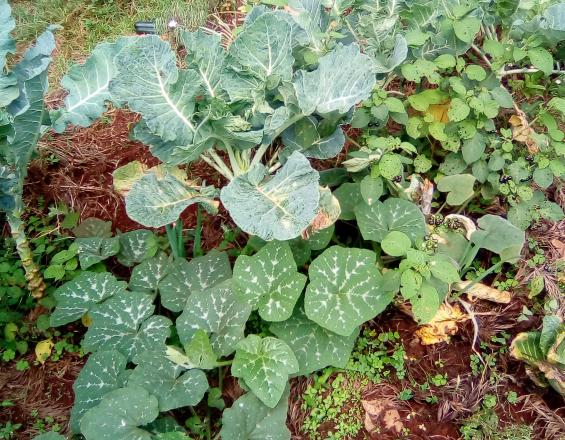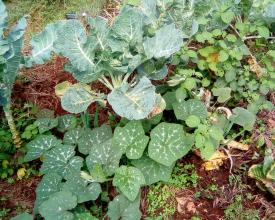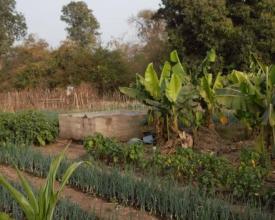Forest Garden Approach

Maximal Space Utilization
Horizontal space Optimization
Crops are planted not in the conventional horizontal rows, but bio-intensive triangular rows (Allongue, 2018). Bio-Intensive Triangular Spacing offers plant density in a farm, thus allowing farmers to put more crops in an otherwise small piece of land.
Vertical Space Optimization
In this second technique of the forest garden approach, the farmer plants crops that utilize the vertical space differently, with some utilizing more of the underground, others more of the atmosphere (Allongue, 2018). In this technique, crops can be dense on a farm, yet give each other space to grow and flourish, as the crops support each other. Cabbages and carrots can for example grow together in one space seeing that carrots will utilize more of the underground space while cabbages will utilize the above-round space. An addition of kales and maize plants into the mix offers shade for the former plants as well as soil conservation from erosion.
Context
Challenges addressed
Location
Impacts
Advantages of Forest Garden Approach
Superior to the conventional monoculture, the Forest Garden Approach offers many advantages all geared towards sustainable organic farming, let alone maximal space optimization.
Environmental impacts are:
1. Reduction in greenhouse gas emissions
2. Reduced introduction of chemicals into the ecosystem
3. Soil preservation by the use of ground cover and shrub crops
Social impacts are:
1. Families have year-round farming
2. Reduced conflicts over farming space since people may now utilize micro spaces
3. Food security for families and hence the society at large due to year-round farming of different crops
4. Families enjoy better nutrition from the wide range of crops
Economic benefits:
1. A reduction in the cost of farming
2. Increased farm produce hence increased year-round trade

